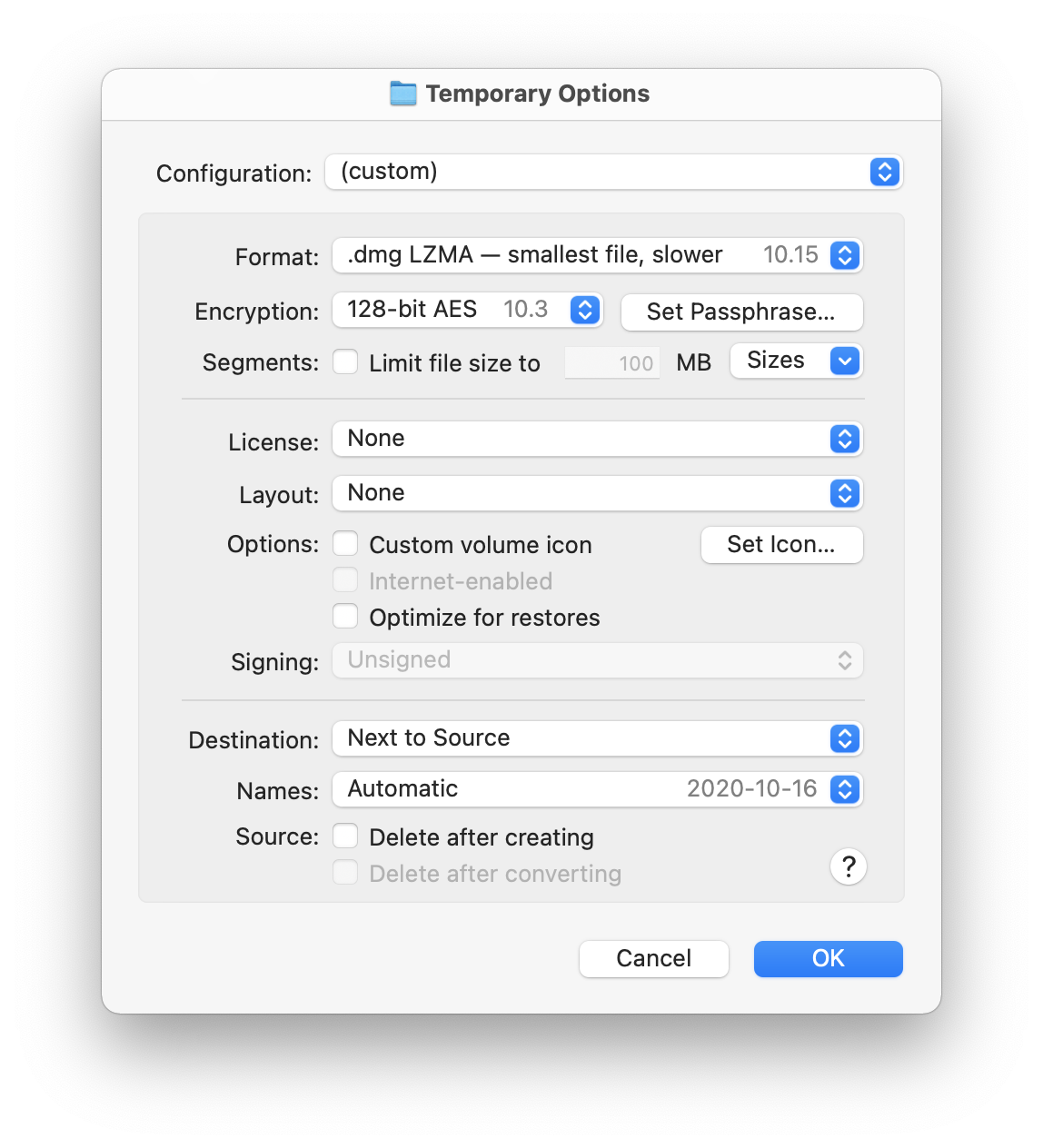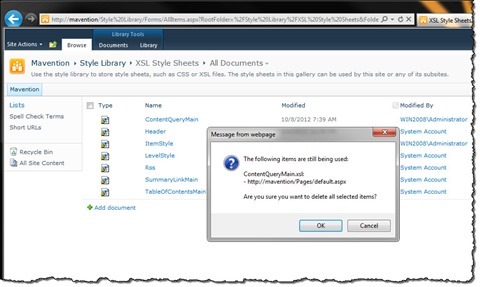Are Dmg Files Safe To Delete
Jun 22, 2019 I can't find the file that I want to delete. IOS devices have a much different file system than most other devices, and this can make it very difficult to find and remove specific files. You'll need to use an app that can open the type of file that you want to delete in order to access and delete the file. Feb 05, 2013 I have a dmg file (3.7 GB) which is a video and I can play it on my mac, I am trying to burn it on a dvd so i can play it on a dvd player or my playstation, i am able to successfully burn it but it still doesn't play neither on a DVD player nor my playstation, i tried a pc too but still doesn't read it.the dmg file is encrypted, I was wondering if this was the problem, will decrypting solve. Is it safe to delete a 'Deleted user'.dmg file in my /users/ folder? As long as you want to delete the data in those two.dmg files, you can delete them without. The DMG one can go since you don’t need it anymore. First, eject the DMG by right-clicking it and selecting the “Eject” command, or by pressing the eject button next to the disk in finder. This unmounts the DMG file from your system. Next, delete the DMG file itself unless you have a reason for keeping it around. Can I Use DMG Files in Windows?
Windows can’t seem to shake its legacy off. After evolving to a point which looks very modern and nothing like the comical Windows XP or the super stoic Windows 7, there are still some things that won’t leave Windows 10 alone. Corrupt files being only one of them.
I’ve already seen a few users facing an error message while deleting unwanted files on their systems. Files that insist that they are ‘In Use’ when clearly nothing is open on the users system. How can you get rid of such undeletable files? No need to google, we are here to make your life easier.
Cool Tip for Windows 10 Users: The Digital Citizen blog has an interesting post that compares browsers to see which one saves battery on Windows 10. Check it out.1. Try Killing the Task
I spoke about Window’s legacy for a reason. Sure, it has its cons, but it’s got it pros too. One great thing that I’ve always liked about Windows is the great Task Manager. This not only gives you an idea of running apps and services at any time on your computer, you can also use it to kill services that might be stopping you from deleting certain files.
So, for example, if you can recognize the type of file yourself (say Excel), then hunt for the locked file or process in the Task Manager window and right-click on it. Then, click on End task. Not to worry here, if it’s a system based task, you won’t be able to kill it anyway. Even if you have administrator access.
2. Delete File Using Third Party Tool
Administrator access denied? Don't worry. There is a neat 3rd party solution that can help getting rid of files and even folders that Windows won’t let you delete. It’s called Unlocker and once you’ve downloaded and installed it, all you gotta do is right-click on the files/folders and then select Unlocker.
Here, you might get a list of processes which are associated with a certain file or folder. Click on Unlock All and this should free up the file/folder to be removed. If it doesn’t work, try Kill Process.
Run Dmg Files On Windows
3. Delete File Using Command Prompt
This option is for those who have some experience with Microsoft Windows command prompts. Go to Start menu or press the Windows button on your keyboard and go to Run or just press Win+R. A tiny box will appear at the bottom right corner of your desktop.
Here, type in Cmd and press Enter to open command prompt. Mac cache cleaner snow leopard. You will now see a black window, enter the command line del /f filename there. Make sure the ‘filename’ is the name of the file you want to delete. You can also force delete multiple files that you can specify using commas.
You can also delete a folder using command prompt. Do the above steps till you find the command window and type in the command line RD /S /Q <Folder Path>. Here, the file path would be what the address bar on windows explorer is showing when you go to the folder that you want to delete. For example, RD /S /Q C:UsersXXXPremiumFolder X.
4. Safe Boot if All Else Fails
Are Dmg Files Safe To Delete Free
If nothing works out, then Safe Boot is the ultimate savior. Do this step only if you’ve tried all else and not had any luck. There are plenty of ways to go in Safe Mode, but the one I like most if by typing msconfig in the search box of Windows 10 and then heading over to the Boot tab of the window that pops up.
Here, select the Safe boot option and once you click Apply you will be prompted to reboot the system.
It will now automatically take you to the Safe Mode, where you can delete the file. To get back to the regular mode, go back to the MSCONFIG window and uncheck Safe boot from the boot menu and the PC will reboot back to its normal state.
Any Alternatives?
These are the best options for removing files/folders that won’t go without a fight. But, if you have better alternatives, then we’d like to hear back. Join us in our forums to discuss.
 Read Next4 Ways to Quickly Lock Files and Folders in Windows 10 NativelyAlso See#file deletion #Lists
Read Next4 Ways to Quickly Lock Files and Folders in Windows 10 NativelyAlso See#file deletion #Lists Did You Know
Microsoft Edge was initially code-named Project Spartan.
More in Windows
3 Best Ways to Identify Fonts in PDF Files in Windows 10
Mac is winning fans over the planet. Compared to other computers/laptops running window system, Mac has a more desirable and simplistic interface with strong security. Though it's hard to get used to using a Mac in the first place, it becomes easier to use than others. However, such an advanced device might goes disappointing sometimes especially when it's running slower and slower.
At this time, I would suggest you to 'sweep up' your Mac like the way you free up storage of your iPhone. In the article, let me show you how to delete iTunes backup and unwanted software update packages so as to free up storage and speed up. You should know that Mac will not clear up such files for you, so you have to do it yourself at regular times.
Part 1: How to Delete iTunes Backup Files Manually?
An iTunes backup usually takes up at least 1 GB of storage. In some cases, it could be up to10+ GB. Moreover, Mac will not clear those files for you, so it's of importance to remove such backup files when they become useless. Below are the instructions.
Step 1. Launch 'iTunes' app on your Mac.
Step 2. Head to 'iTunes' menu and click 'Preferences' option.
Step 3. Select 'Devices' on the window, then you can view all backups on the Mac.
Step 4. Decide which ones to be deleted according to the backup date.
Step 5. Choose one and click 'Delete Backup'.
Step 6. When be asked whether to delete the backup, please choose 'Delete'.
Part 2: How to Remove Unnecessary Software Update Packages?
Do you get used to upgrading iPhone/iPad/iPod via iTunes on Mac. Then, there are probably stored a plenty of software update files on Mac depleting precious space. Normally speaking, a firmware package is about 1 GB. That's no wonder why your Mac is slowing down. Let's find them out and get them deleted.
Step 1. Click and launch 'Finder' on Mac.
Step 2. Hold down 'Option' key on keyboard and go to 'Go' menu > 'Library'.
Note that only through pressing down 'Option' key can you access 'Library' folder.
Step 3. Scroll down and click on 'iTunes' folder.
Step 4. There are 'iPhone Software Updates', 'iPad Software Updates' and 'iPod Software Updates' folders. Please browse through each folder and check for a file with an extension as 'Restore.ipsw'.
Step 5. Manually drag the file into the 'Trash' and clear the trash.
Part 3: How to Remove Unwanted iTunes Files with One Click?
If you're tired of the complex steps above, here you may try MacMaster, which is available for free download. It's a managing app with powerful functions but simple to use. This nice tool is able to help you get rid of such unnecessary files. Action speaks louder than words. Let's take a look of how it works.

Step 1. Launch MacMaster on Mac
You have to download and install MacMaster from the website at first. Then, click 'Launchpad' and select 'MacMaster' to run the app. When running, a simple window shows up. You can check for 'CPU Usage' and 'Network Usage' directly on the window. Or, you're also able to check the memory usage with ease.
Step 2. Find Unwanted iTunes Files
To scan out unwanted iTunes files, choose 'iTunes Junk' and select 'Scan' button to find out iTunes junks on your Mac.
Step 3. Remove Redundant iTunes Files
MacMaster will display redundant files on the right side like 'iTunes Cache', 'iTunes Backups', 'iOS Software Updates' and 'iTunes Broken Download'. Select 'iTunes Backups' and check for backup files or others. After that, select all iTunes data that you don't need click 'Clean' to get them off. If you have done it successfully, you will see 'Zero KB' next to 'iTunes Junks'.
Do you feel that your Mac is revitalized? Believe in yourself. It's true! Your Mac lost weigh just now and is now running like a leopard. Please enjoy!
- Hot Articles
- Duplicate Files Finder on Mac
- De-duplicate Music Files in MacBook Air/Pro
- Too Many Junk Files on Mac, Can I Delete in One Click?
- How to Improve Safari Speed on Mac
- How Do I Delete Google Chrome from My Mac
- How to Securely Clean Up the Trash on Your Mac
- Guide to Delete System Log Files on MacBook or iMac
- How to Reset Safari Browser on Mac
- How to Delete Photos in Photos/iPhoto from Mac